Brian Kelly this season has ran more of a “smash mouth” spread (regarding the running game), preferring to run downhill as much as possible through use of inside zone and power plays. This is likely because Notre Dame has struggled with the length of blocks that outside runs require more of. As a perimeter threat, he has most often ran a jet sweep tap pass or simply jet motioned a receiver to add outside misdirection to other run plays. The jet sweep has had mixed success, while plays taking advantage of the defense’s overplaying of the motion have had greater success.
Picture from Urban Meyer’s Utah playbook.
What is the Jet Sweep
The Jet Sweep is a type of motioned run where the receiver moves across the formation and accepts the hand-off or tap pass from the quarterback while running near full speed. Notre Dame has used both a hand-off and tap pass (popularized by West Virginia and Clemson), but the vast majority has been tap passes. With the tap pass the play is technically a passing play (according to stats) but for all intents and purposes was a run in the sense of how it stresses a defense.
Notre Dame appears to typically use a outside zone blocking scheme. One particular benefit of the jet sweep is it involves an athlete (in the form of Dexter Williams, Torii Hunter Jr, or others) in the short yardage game in addition to being involved in screens and short hitches.
“Counters” to the Jet Sweep
There are myriad plays that take advantage of the defense overplaying the jet motion, of them Notre Dame has used is several variations of counter trey (counter trey will be talked about in a later post at some time) and play action (including Malik Zaire’s ill fated “pass” attempt against duke).
One wrinkle Notre Dame ran that was rather interesting is a power read (will also be talked in a later post) play with the second option being the jet sweep tap pass. It appears that that play was not a true read but rather a pre-snap decision (it is pretty bold to read a play-side DE with a pre-snap decision). This type of variation of the power read has been run in different methods by Clemson and Syracuse in the form of a pitch power read.
Nevada Garbage Time
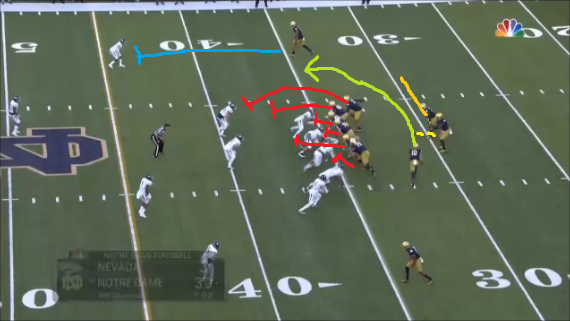
Here Notre Dame with a 36 point lead has the subs in against Nevada. Tyler Luatua (TE in the wing position #13) lead blocks on the sweep targeting the strongside linebacker. Jon Montelus (RT #60) also moves to lead block. Kelly almost always has the running back lead block for the jet sweeper, but rather oddly Dexter Williams (#2) does not really do anything on this play. Tommy Kraemer (LT #78) blocks his defensive lineman while Trevor Ruhland (LG #57) moves onto the next level. Malik Zaire passes the ball to Chris Finke who motioned across the formation.
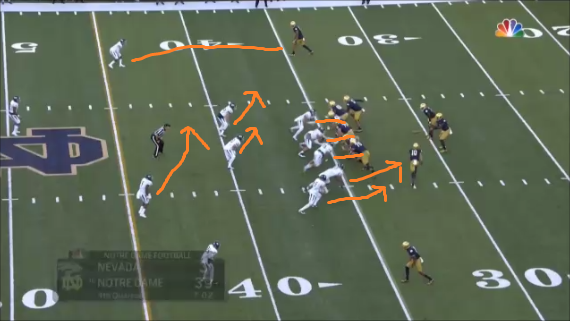
Both Nevada linebackers correctly diagnose the play and react to the motion, however over reacting to the motion sets up counter plays from the offense.
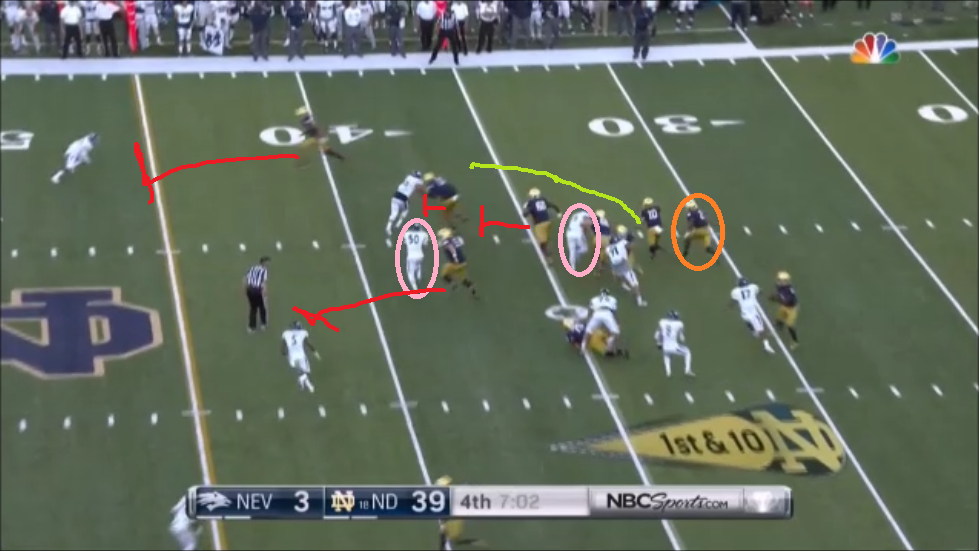
Notre Dame has every defender accounted for and if blocked well the play should easily be a big gain. However Trevor decides not to block the near linebacker and instead moves to block the weakside safety. Jon Montelus is in perfect position to block the playside defensive end, but he (the end) manages to break free, though is unable to make the tackle for loss on Chris Finke. Chris Finke follows his blockers for the easy gain. Notre Dame was playing against Nevada’s second unit with their own second unit and had the defense outnumbered on the permitter.
Whole play:
Syracuse Goal Line
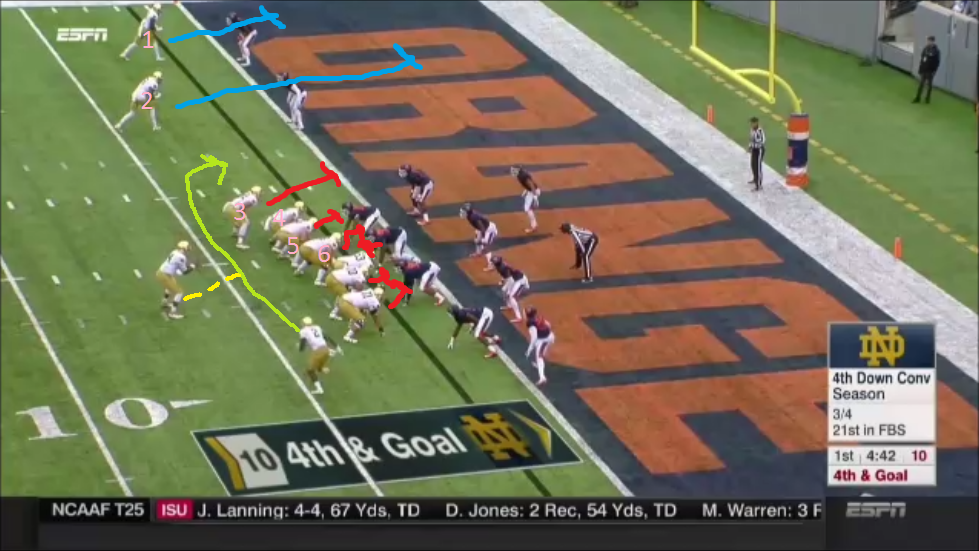
In this play Notre Dame is in 4th and about 1 against Syracuse. Notre Dame has 6 blockers for 7 defenders but the safety and middle linebacker have a long way to go to stop the play. At worst if blocked right, this will result in a 1 on 1 for one yard, which Dexter Williams should win enough to score the touchdown.
Dexter Williams motions across formation and receives the touch pass from Kizer. Nic Weishar (TE wing #82) moves to block the strong-side linebacker. Durham Symthe (#80) and Mike McGlinchey double team the strong-side defensive end before one of them will hopefully move to the next level. Sam Mustipher (#53) and Quenton Nelson (#56) double team the strong-side defensive tackle before Nelson moves onto the next level.
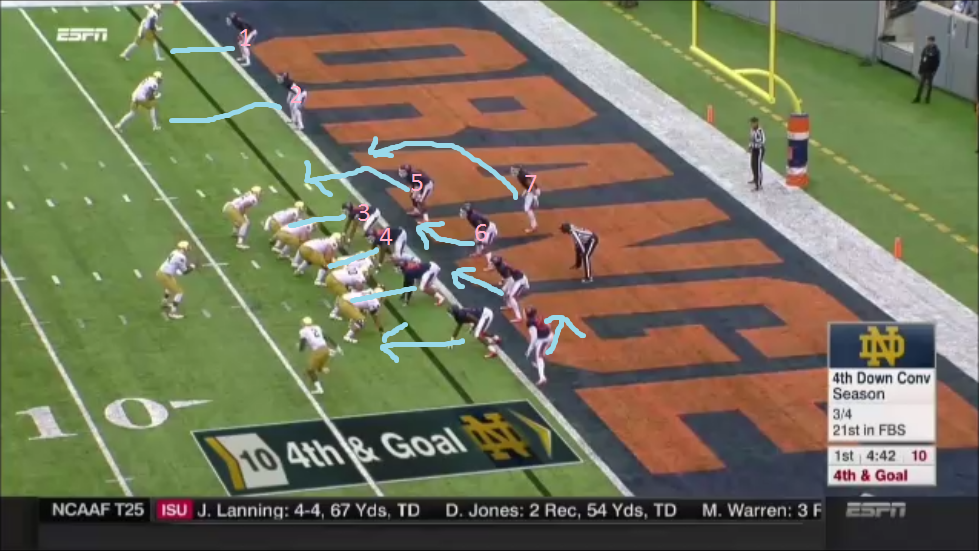
The linebackers and safety react to the motion and move to rally to stop Williams
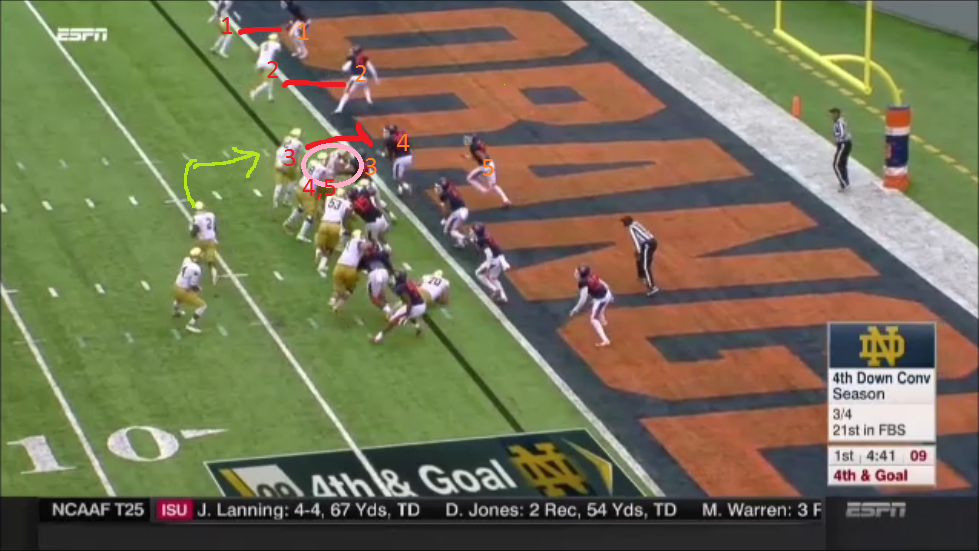
The strong-side linebacker does not move laterally enough and becomes irrelevant. Notre Dame has Nic Weishar ready to block the strong-side defensive end, and has Durham Smythe and Mike McGlinchey double teaming the tackle. If either Smythe or McGlinchey moves to block the safety Williams should walk into the end zone untouched.
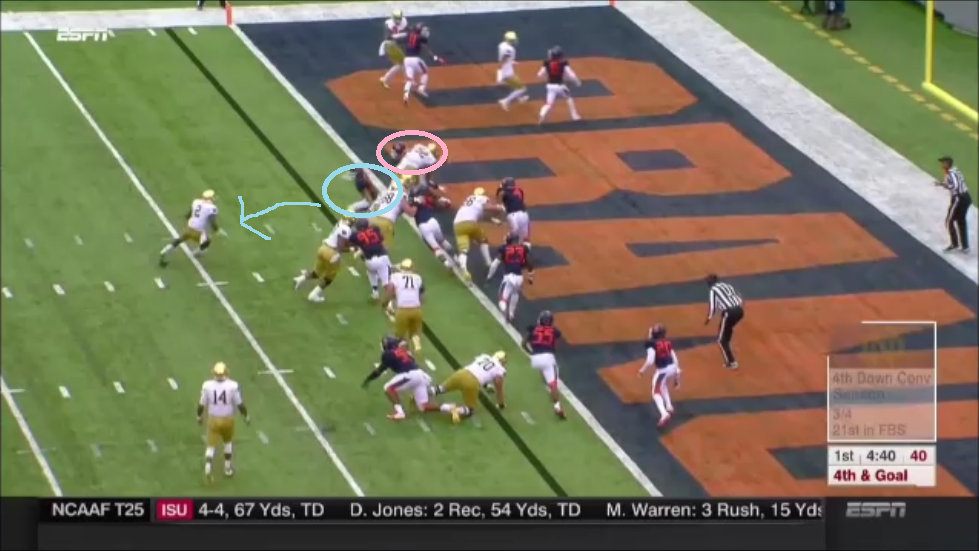
Unfortunately neither do (it likely was Smythe’s responsibility) and the safety is unblocked. Additionally Weishar is unable to hold onto his block, but it would not have mattered if the safety was blocked. Williams is stopped for a gain half a yard and the Irish are held out of the endzone.
The play here:
Syracuse Play Action Wheel
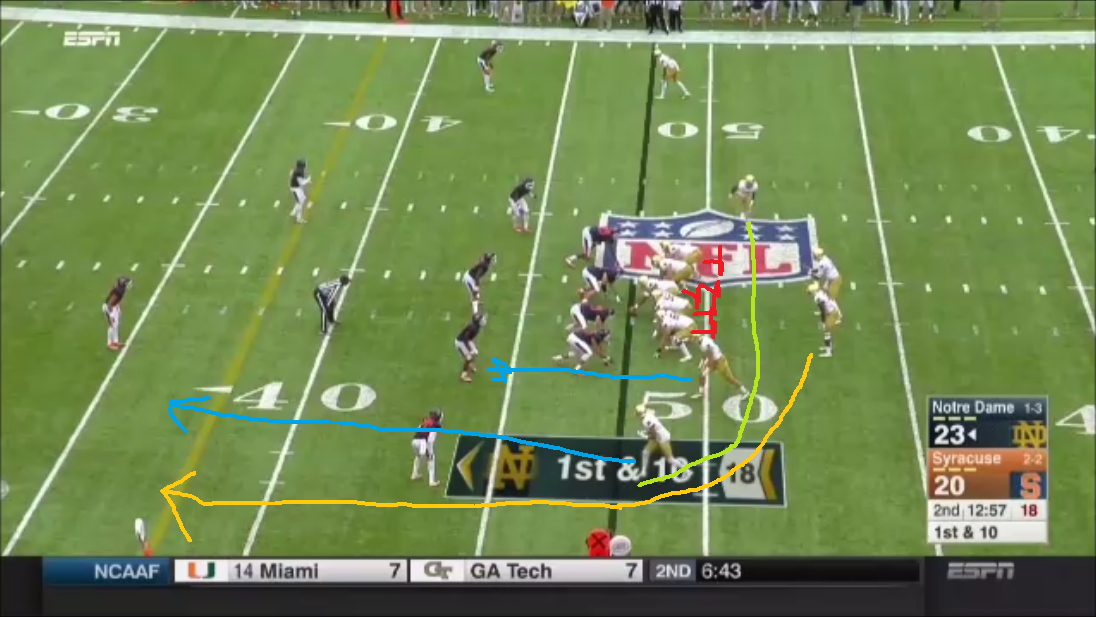
Kelly had already ran two previous jet motion plays (both run plays) previous to this play. On the preceding jet motion play the linebackers had overplayed the motion so it was not time for the Irish to use a constraint play in the form of a wheel. The outside wide receiver runs a go route and the slot receiver runs a short hitch, the running back runs a wheel making this a quasi triangle stretch / smash concept of a zone defense.
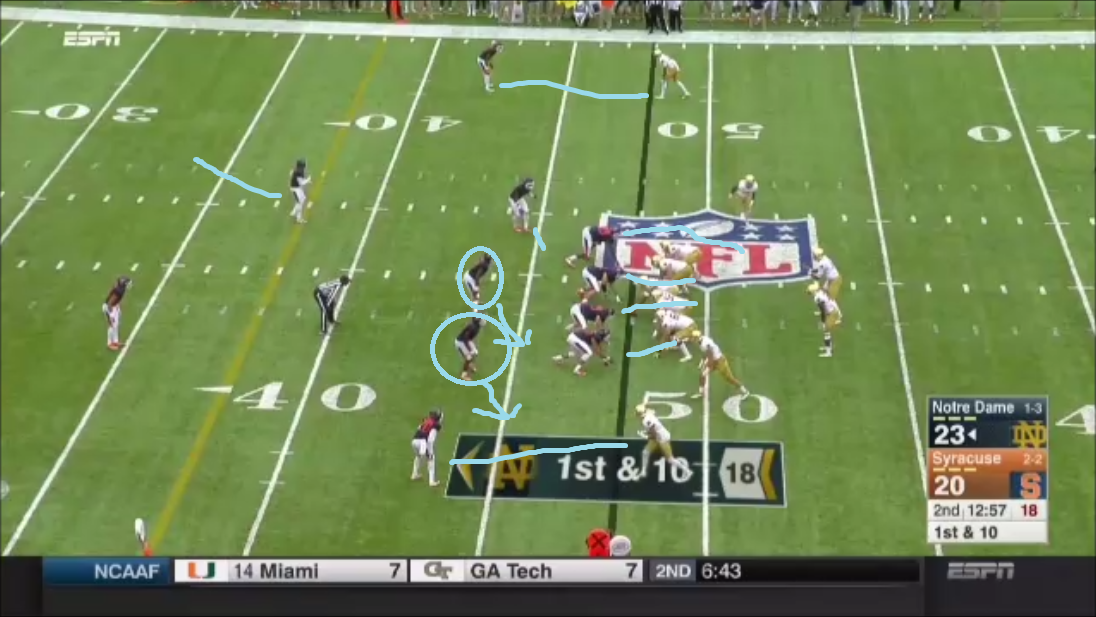
It is difficult to tell the defensive coverage but some form of two high zone coverage (likely quarters) is probable. The strongside linebackers react to the hitch and the jet motion leaving no one on the running back’s wheel.
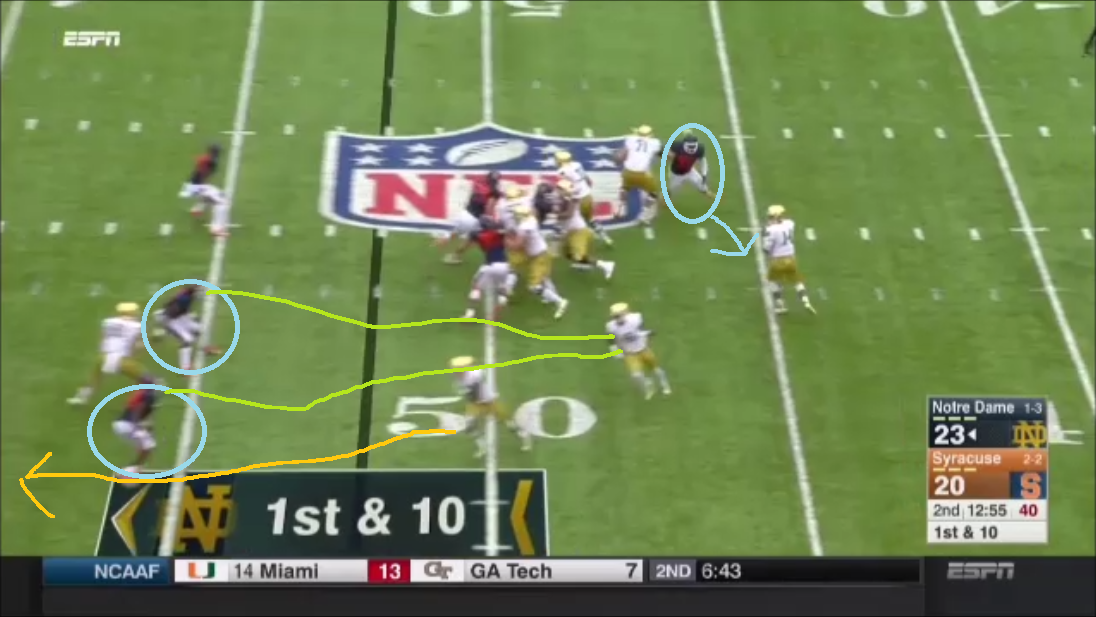
Alex Bars (#71) manages to barely touch the weakside defensive end, who effectively is coming unblocked. Kizer correctly sees the wide open running back and completes the pass for a gain of 45, 25 of which was after the catch.
Play:
Notre Dame’s Lack Of Success At The Goal Line
Notre Dame has typically ran the jet sweep when they had the defense outnumbered on the perimeter or to set up the counter moves of the jet motion. Brian Kelly has twice called the jet sweep near the goal line and both times Notre Dame had even or greater blockers than the defense. Despite this, both plays were stuffed because of poor blocking. This does not mean that Notre Dame is a finesse team or is soft (in fact the vast majority of Kelly’s run plays are downhill), players simply miss blocks, however it appears Notre Dame has had trouble holding second level blocks in multiple types of plays.
As always you can follow 18stripes at https://twitter.com/18stripes and me at https://twitter.com/Downinthebend

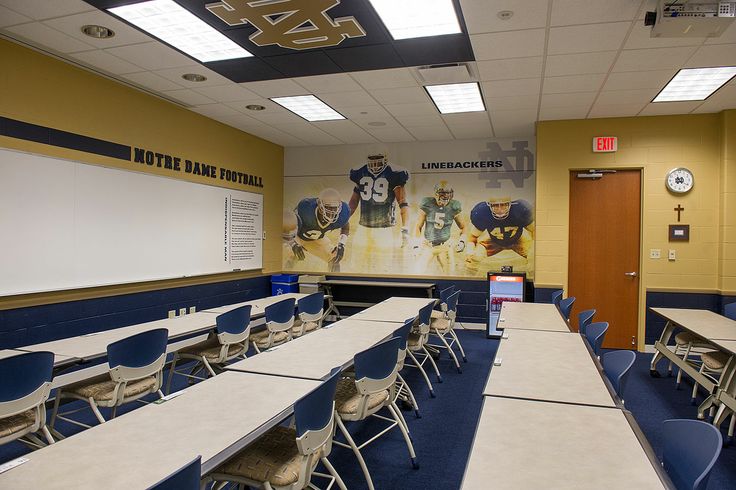

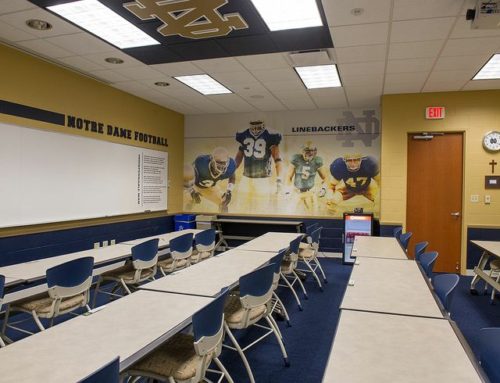
I can’t say I’m surprised a football play with J-E-T-S in the name would be so prone to fail.
I’m glad you broke down the 4th down play against Syracuse at the goal line. At the time, I thought Williams should have tried to run towards the corner instead of turning up field but it’s interesting to see that the larger failure was blocking.